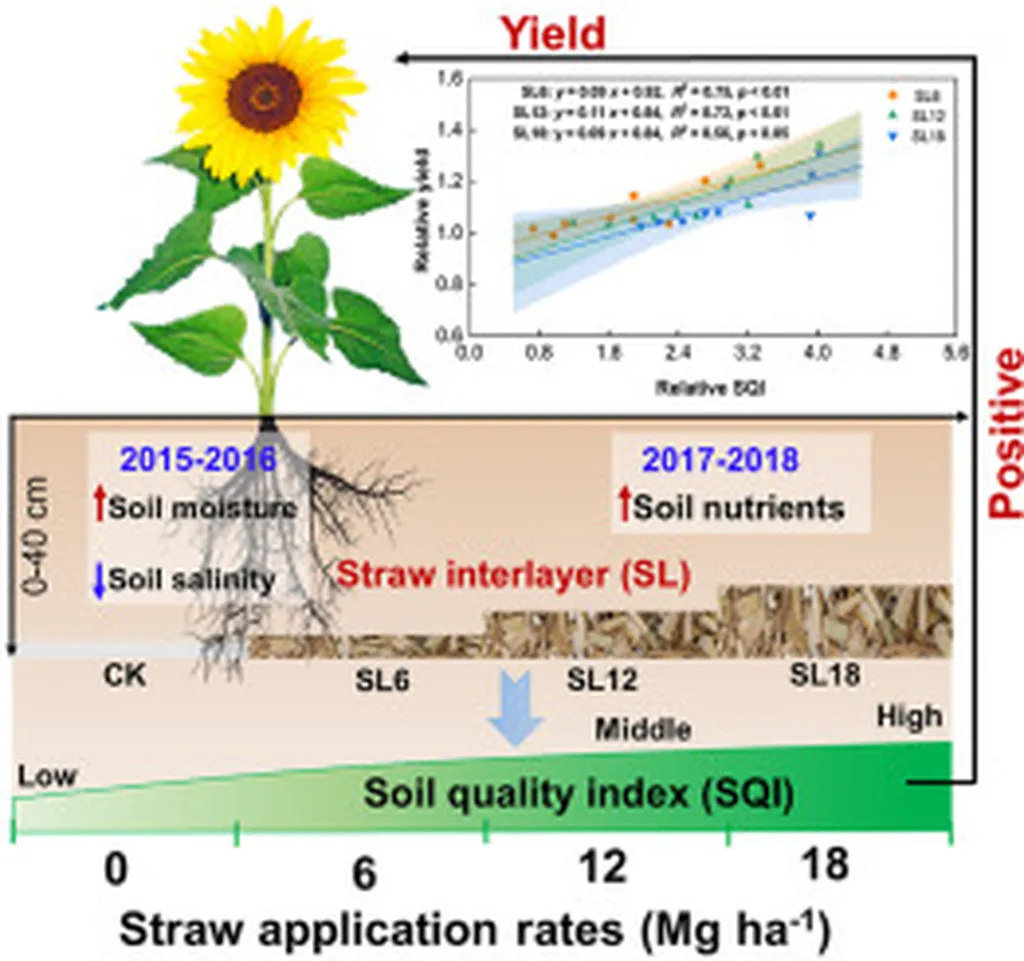In the heart of China’s Yellow River Delta, where saline-alkali soils pose a significant challenge to agriculture, a groundbreaking study led by WANG Hua from the Henan Haihe River Basin Water Resources Affairs Center is offering new hope for farmers and the energy sector alike. The research, published in ‘Guan’gai paishui xuebao’ (translated as “Journal of Glaciology and Geo-cryology”), explores the combined effects of subsurface drainage and biochar application on sunflower growth, yield, and quality, with promising results that could reshape agricultural practices in coastal regions.
The Yellow River Delta, a critical area for agricultural production, has long struggled with soil salinization and waterlogging, which stifle crop growth and productivity. WANG Hua and his team set out to tackle this issue by investigating the potential of subsurface drainage and biochar application to ameliorate these challenging soil conditions. “We wanted to find a sustainable solution that could improve soil properties and enhance crop growth, ultimately benefiting both farmers and the broader agricultural industry,” WANG Hua explained.
The study focused on sunflower, a versatile crop with significant applications in the energy sector, particularly in the production of biodiesel. By manipulating subsurface drain spacing and biochar application rates, the researchers aimed to optimize soil moisture content and pH, ultimately promoting healthier plant growth and higher yields.
The results were striking. The application of biochar significantly reduced soil moisture content and increased soil pH, creating a more favorable environment for sunflower growth. At the flowering stage, the treatment with a drain spacing of 30 meters reduced soil moisture by up to 16.57% compared to the control, demonstrating the effectiveness of subsurface drainage in managing waterlogging. Moreover, the combination of 30-meter drain spacing and biochar application led to a substantial increase in plant height, stem diameter, and yield. “The improvements in yield and quality were particularly noteworthy,” WANG Hua noted. “Biochar addition increased single-head grain weight and yield by up to 19.36% and 19.35%, respectively, which could have significant economic implications for farmers and the energy sector.”
The study also revealed that the combination of subsurface drainage and biochar application enhanced the kernel fat and linoleic acid contents of sunflowers, further boosting their value as a feedstock for biodiesel production. This finding is particularly relevant to the energy sector, as it highlights the potential for agricultural innovations to contribute to the development of sustainable and renewable energy sources.
The implications of this research extend far beyond the Yellow River Delta. As coastal regions around the world grapple with similar challenges, the findings from WANG Hua’s study offer a promising solution for improving soil health and crop productivity in saline-alkali soils. By adopting subsurface drainage and biochar application, farmers can not only enhance their yields but also contribute to the production of renewable energy, creating a more sustainable and resilient agricultural system.
As the world continues to seek innovative solutions to the challenges posed by climate change and environmental degradation, research like WANG Hua’s serves as a beacon of hope. By bridging the gap between agriculture and the energy sector, this study paves the way for a more sustainable future, one where the benefits of technological advancements are harnessed to create a healthier planet and a more prosperous society.

